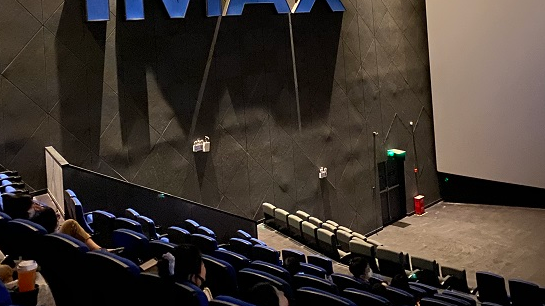Artists stage the performance "Forming a Snowflake" during the opening ceremony of the Beijing 2022 Olympic Winter Games at the National Stadium in Beijing, Feb 4, 2022. [Photo/Xinhua]
China"s space industry workers are known for engineering feats such as sending a rover to the far side of the moon and landing a robot to explore Mars.
However, instead of immense heavens and distant planets, the latest display of their wisdom and expertise took place on the ground at the National Stadium, also known as the Bird"s Nest, on Friday evening during the opening ceremony for the Beijing 2022 Winter Olympics.
Engineers from China Aerospace Science and Technology Corp, or CASC, the country"s leading space contractor, were tasked with building 11 major components for the 140-minute spectacular ceremony.
In a statement issued after the ceremony, the State-owned conglomerate said, "As a crucial technical contractor, we were responsible for the design and construction work for the performance stage, the ground-based display, the "ice cube" and "ice fall", backstage monitoring, communications, and some other systems."
The "ice cube", a structure covered by LED screens, was an example of engineers using their expertise to tackle technical challenges, the statement said.
The main body of the 400-metric-ton cube weighed 180 tons and had to be raised gradually during the ceremony, which meant that engineers needed to devise a reliable method to lift it.
Designers and technicians from the Beijing Institute of Special Engineering Machinery, which specializes in large mechanical platforms such as rocket launchpads, developed a multilayered foldable frame capable of lifting the huge cube in just 43 seconds, allowing for a 1-millimeter degree of error.
Another visual marvel-a ground-based display screen covering 10,100 square meters-was built by engineers from the Beijing Aerospace Automatic Control Institute.
They used industrial internet technologies to connect more than 40,000 screens and monitor their working conditions. To ensure no malfunctions during the opening and closing ceremonies, engineers placed four signal transmission lines for the colossal screen to prepare sufficient backup capacity.
Another group of engineers from the automatic control institute established a complex communication network for the opening ceremony. The system consisted of nearly 90 signal transmission backpacks, 700 wireless intercom devices, 7,000 headsets, and linked more than 3,000 personnel on the night.
The torches carried by Chinese athletes during the final legs of the relay in the stadium were developed by researchers at the Beijing Aerospace Propulsion Institute, who used their knowledge and skills gained from developing rocket engines.
The torches can burn amid wind gusts of up to 28 meters per second. They will not go out during strong rain or in temperatures of minus 40 C.
New flagpoles in the stadium flying the Chinese national flag and the Olympic flag were also designed and manufactured by CASC researchers. The flagpoles rotate according to the wind direction inside the venue.
The CASC statement quoted filmmaker Zhang Yimou, director of the opening ceremony, as saying, "The designs and equipment (provided by CASC) worked very well and far exceeded our expectations."
One of the world"s largest space industry enterprises, CASC is the developer and maker of the Long March series of carrier rockets, Shenzhou spacecraft, the Tiangong space station and the Chang"e lunar probes.
In 2019, the space industry giant was selected as one of the leading contractors for the opening and closing ceremonies of the 2022 Olympic and Paralympic Winter Games, as the organizing committee hoped the company could use its experience and expertise in sophisticated programs to support the sporting events.

























